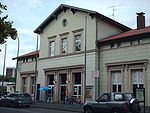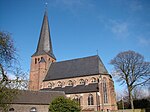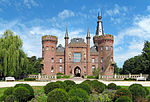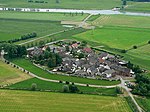Rhine-Waal University of Applied Sciences

Rhine-Waal University of Applied Sciences (German: Hochschule Rhein-Waal) or HSRW, is a young and fast-growing German public university that first opened for the winter semester of 2009/10. It is known to be the most international-oriented university in Germany and offers the majority of degree programs completely in English. Its two campuses are located in the cities of Kleve and in Kamp-Lintfort. The university is named after the German river Rhine and Dutch river Waal. As of 2018, it offers a variety of both English- and German-language study programmes through four faculties: Faculty of Technology & Bionics, Faculty of Life Sciences, Faculty of Society and Economics and Faculty of Communication and Environment.
Excerpt from the Wikipedia article Rhine-Waal University of Applied Sciences (License: CC BY-SA 3.0, Authors, Images).Rhine-Waal University of Applied Sciences
Marie-Curie-Straße, Cleves Unterstadt
Geographical coordinates (GPS) Address Phone number Website External links Nearby Places Show on map
Geographical coordinates (GPS)
| Latitude | Longitude |
|---|---|
| N 51.7937 ° | E 6.1458 ° |
Address
Hochschule Rhein-Waal (Campus Kleve) (HSRW)
Marie-Curie-Straße 1
47533 Cleves, Unterstadt
North Rhine-Westphalia, Germany
Open on Google Maps






